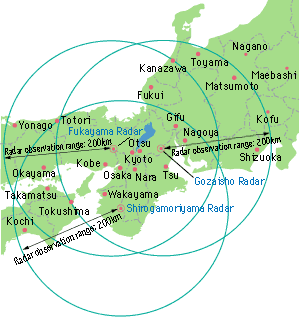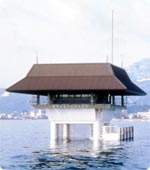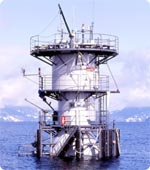 |
 |
Hydrologic
and meteorological data |
 |
|
 |
| The Kinki region supplies some 14 million
of its population of 20 million with water from Lake Biwa.
It is in effect an immense water reservoir that supplies
water for a large area starting from its upstream areas to
the downstream region that encompasses Kansai International
Airport and its surroundings. |
 |
| Rain prediction
by the radar |
|
 |
| The water
sentence observation of Lake Biwa |
|
 |
| Observing the changing
rainy area over the entire Kinki region by radar allows
making forecasts of rainfall expected in the river basin
or dam area. |
 |
The many observation stations
installed around Lake Biwa and the Yodo River basin monitor
rainfall, water level, water quality and flow, and consistently
transmit the measured data. |
 |
 |
 |
|
|
 TopŁ TopŁ |
 |
Lake
Biwa information provided by comprehensive
automatic observation stations |
 |
|
 |
Comprehensive automatic observation stations
were constructed off the shore in the South Lake (offshore
at Ogoto) and the North Lake (off the mouth of the Ado River),
allowing observation of elements such as water level, wave
height, water quality, wind direction, wind speed and temperature.
The observation data is constantly sent via telemeter to Lake Biwa Development
Integrated Operation & Maintenance Office. |
 |
Ogoto
Offshore Comprehensive
Automatic Observation Station |
|
 |
The
Comprehensive Automatic Observation Station
off the Mouth of the Ado River |
|
 |
 |
 |
 |
 |
 |
| While up to a 30 day's
worth is stored in rechargeable batteries by solar cell,
a stable supply of electric power is sent to the observation
devices. |
The water is quite deep (some 70 meters)
at the point of installation, so the rocking and pitching
of the observation station was minimized by connecting
an anchor and a buoy with wires. |
|
| @ |
|
|
 TopŁ TopŁ |